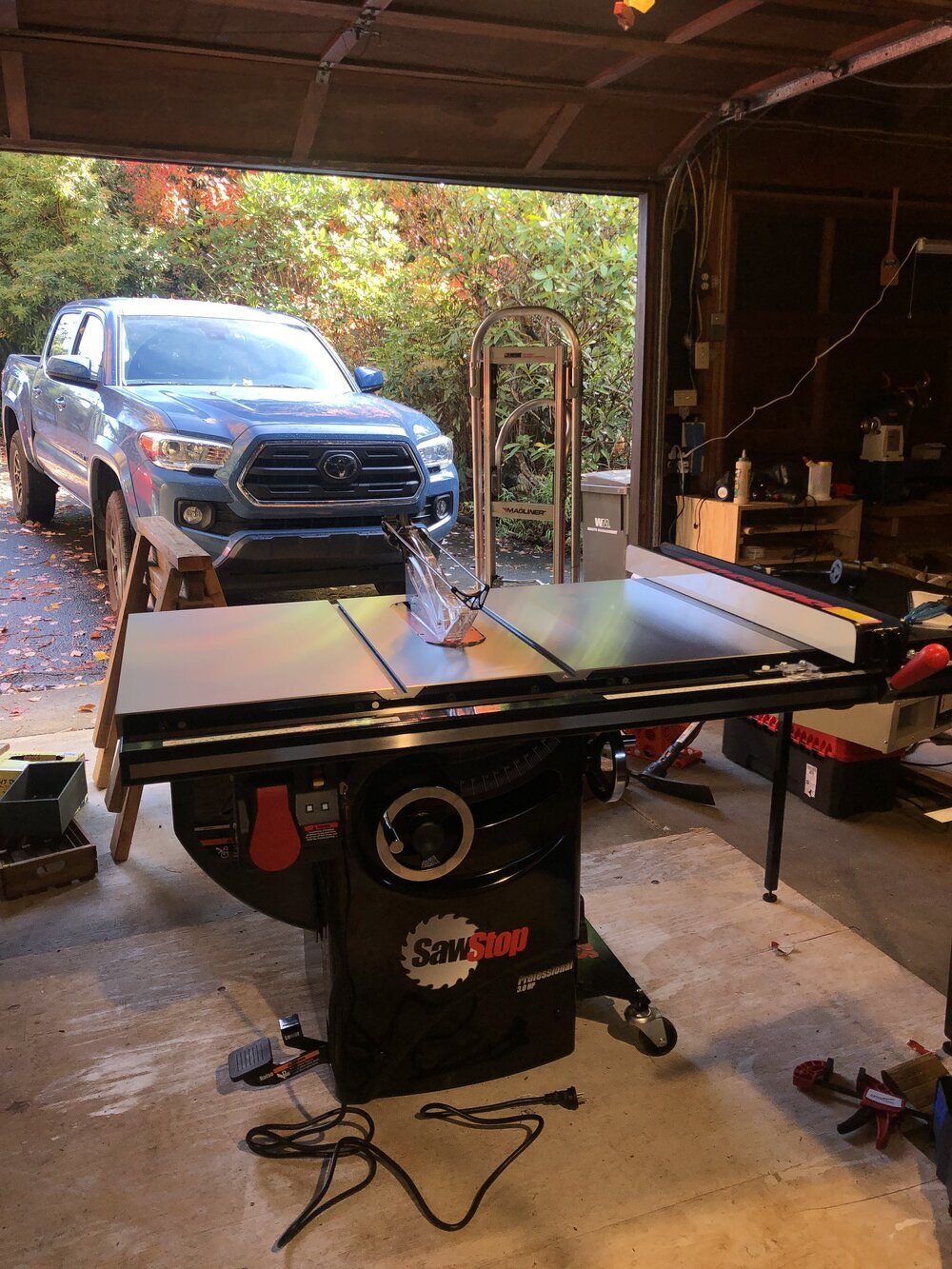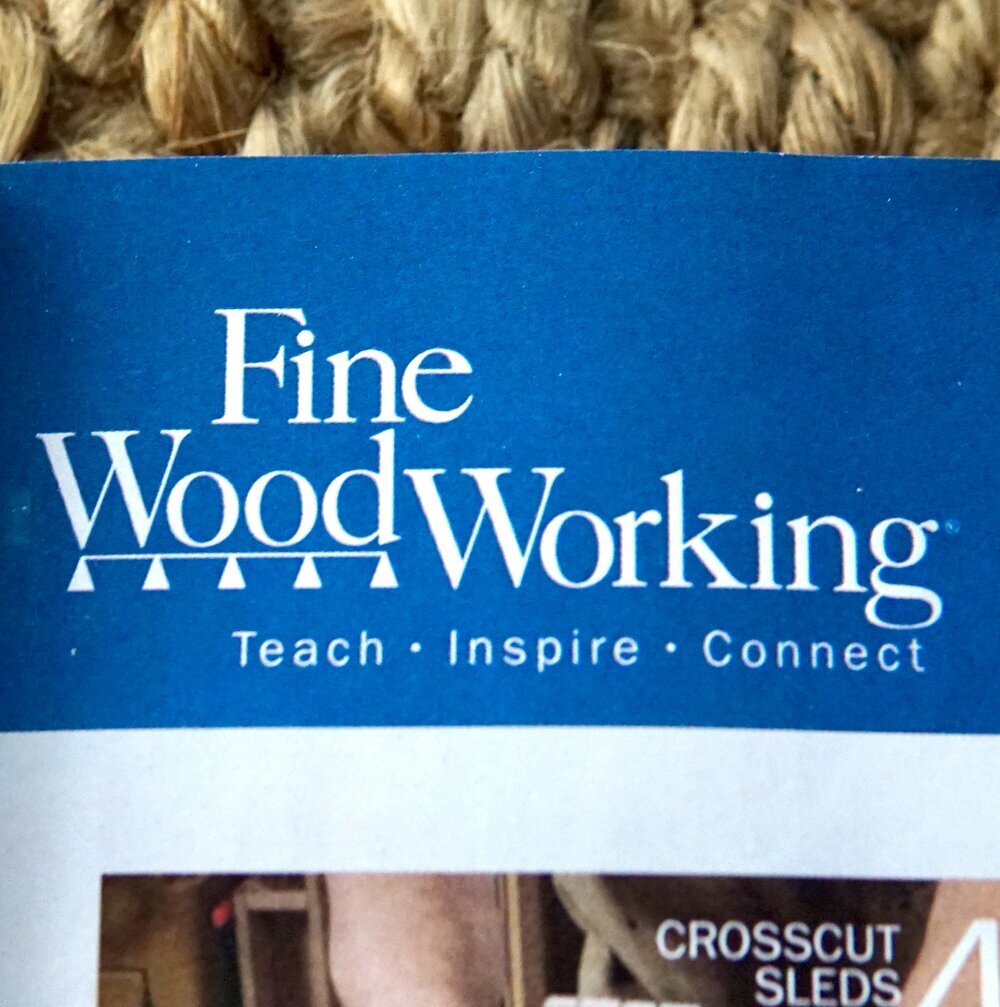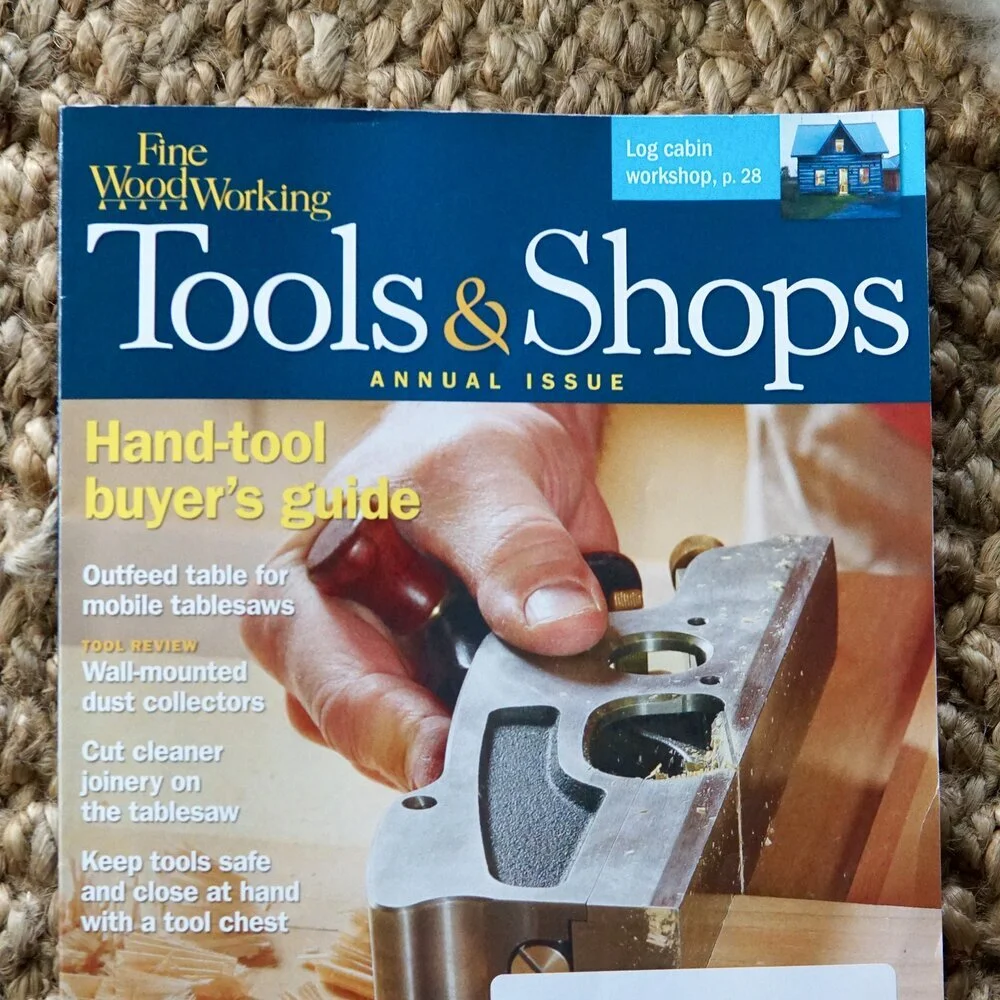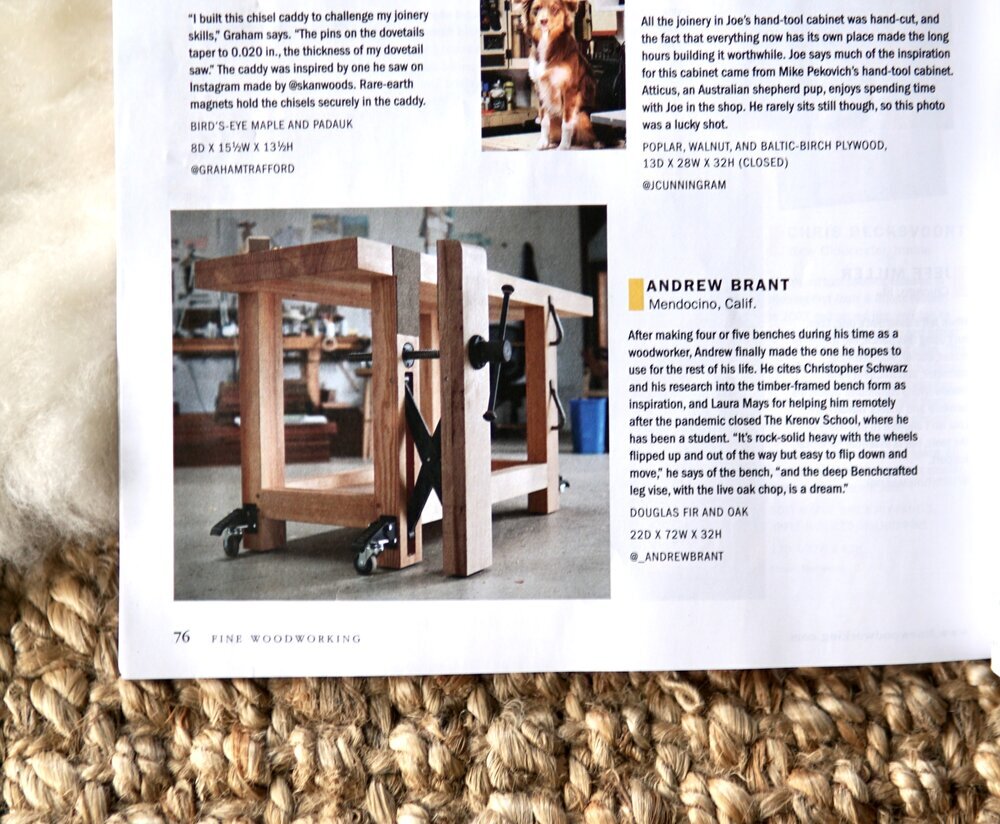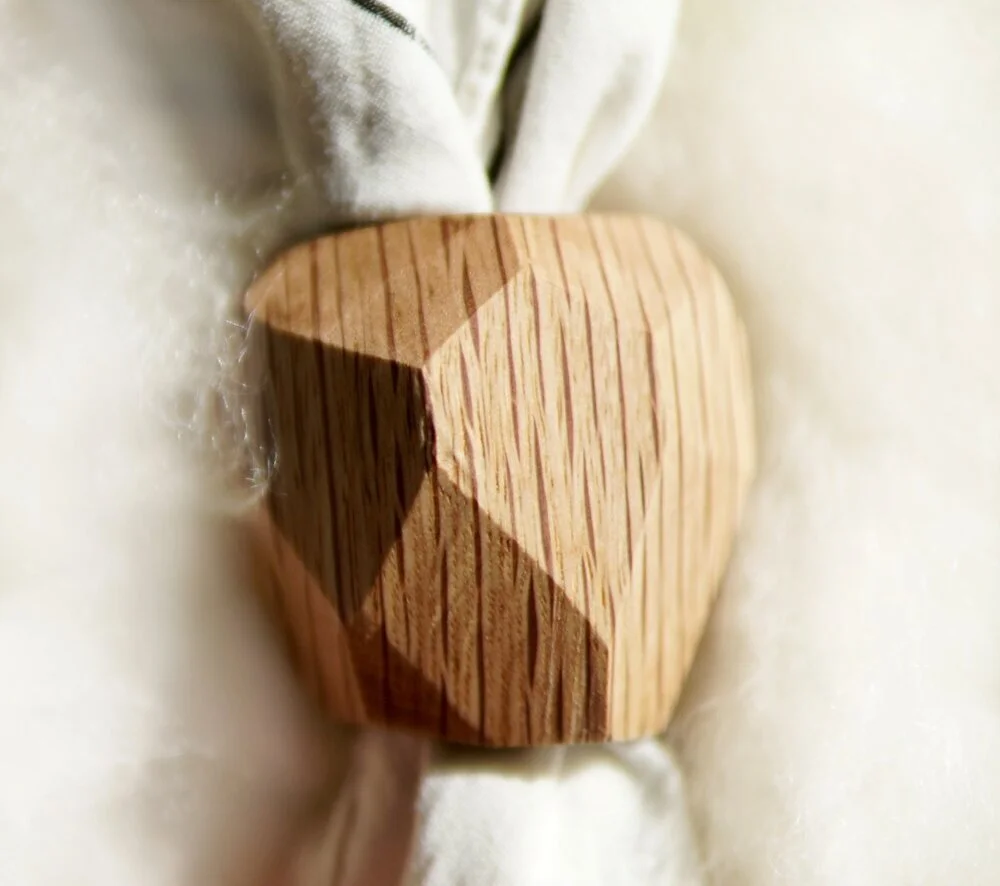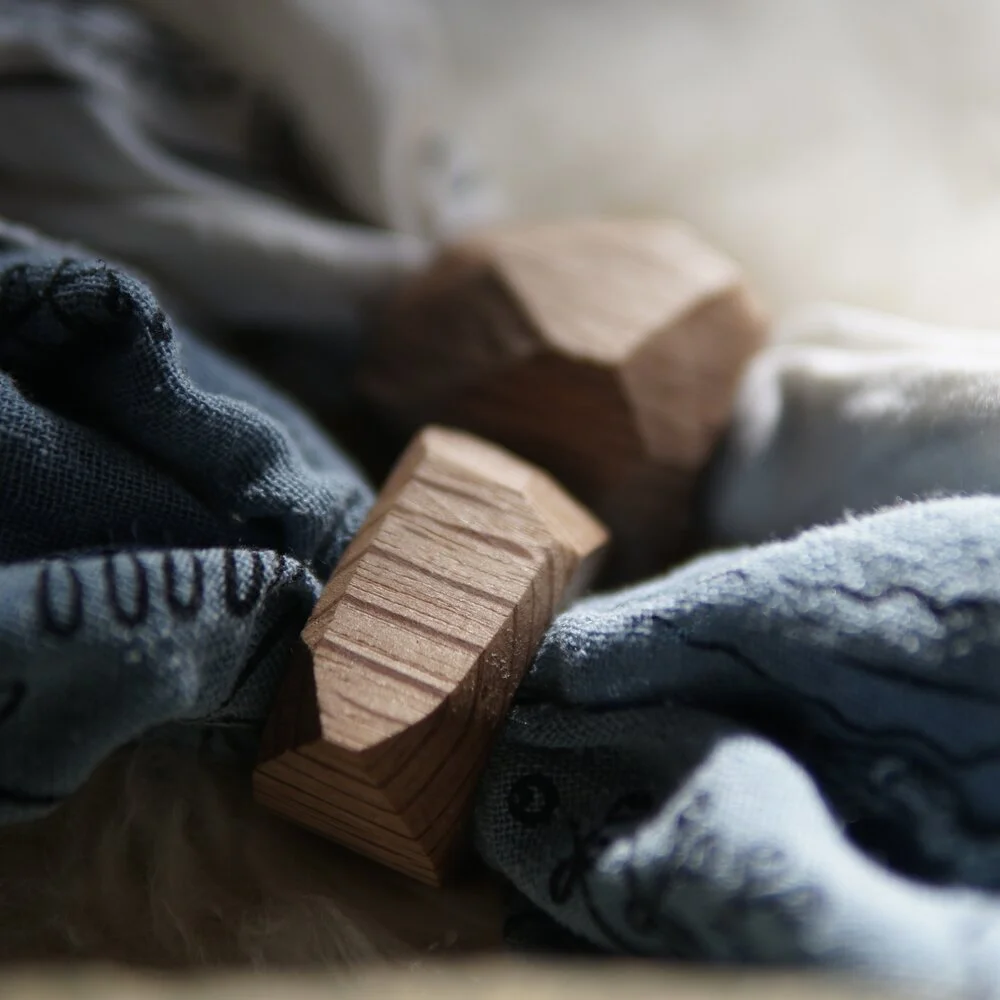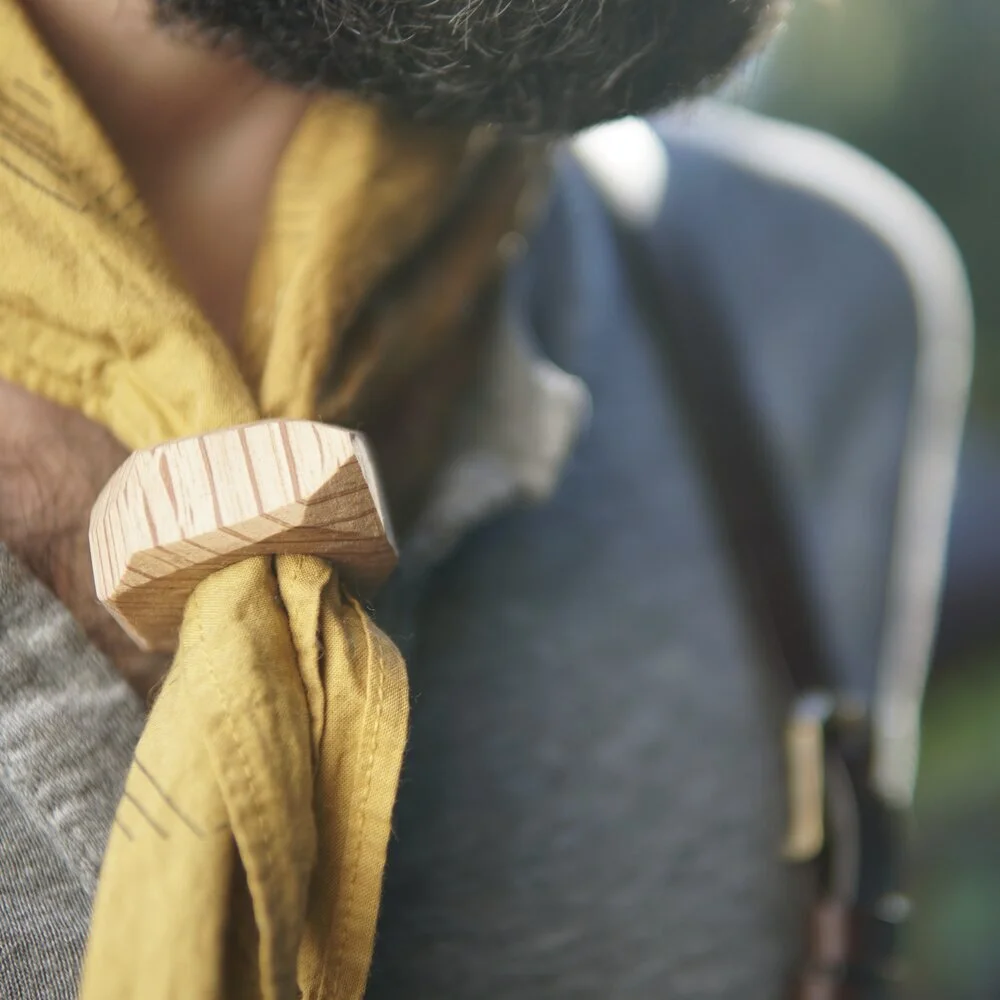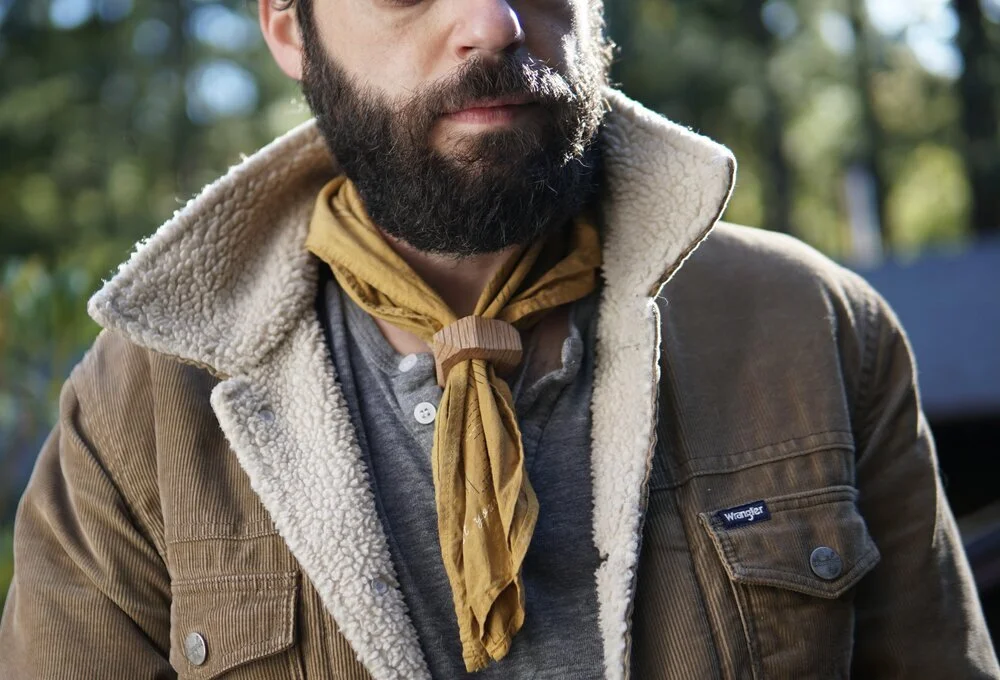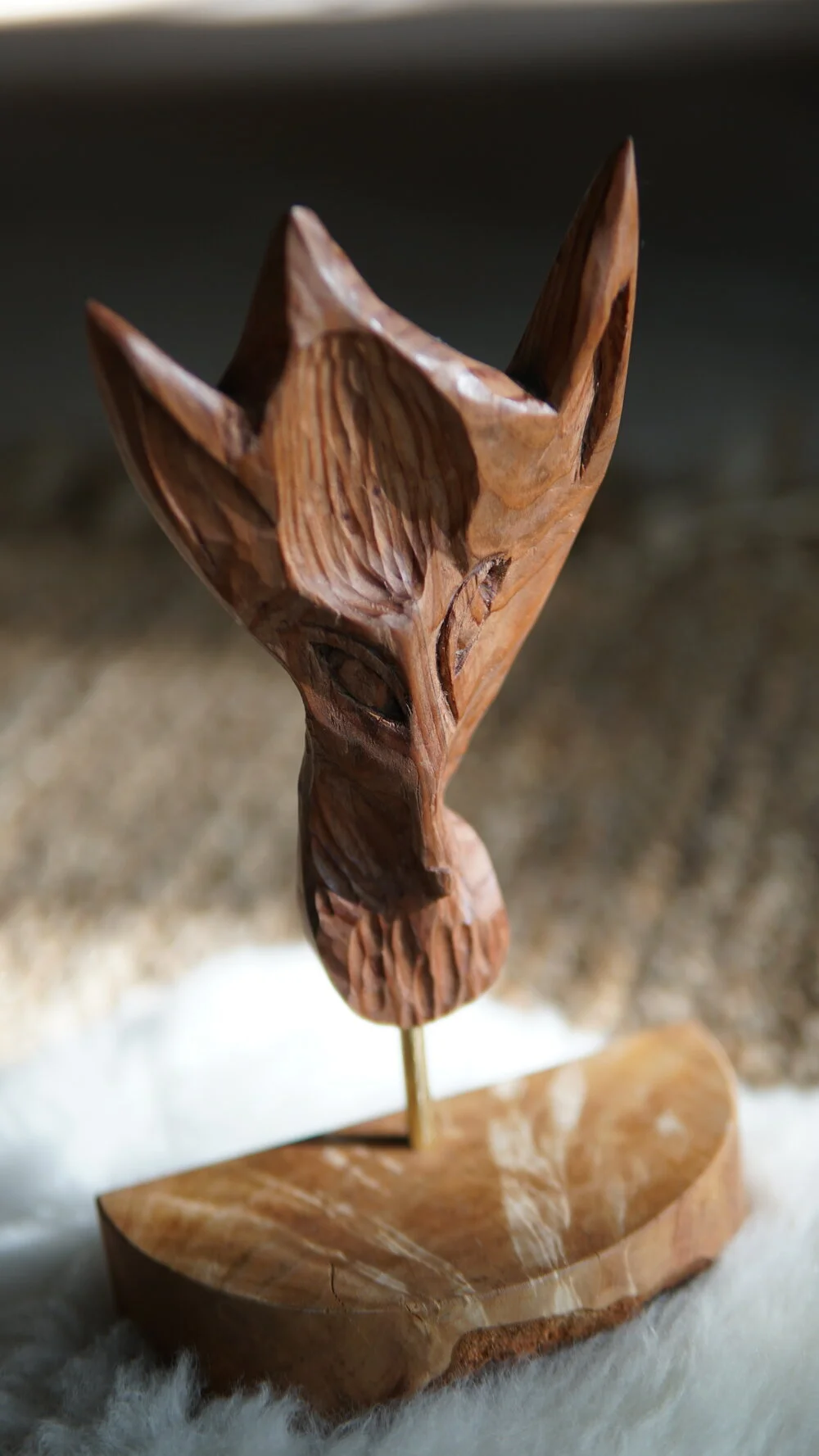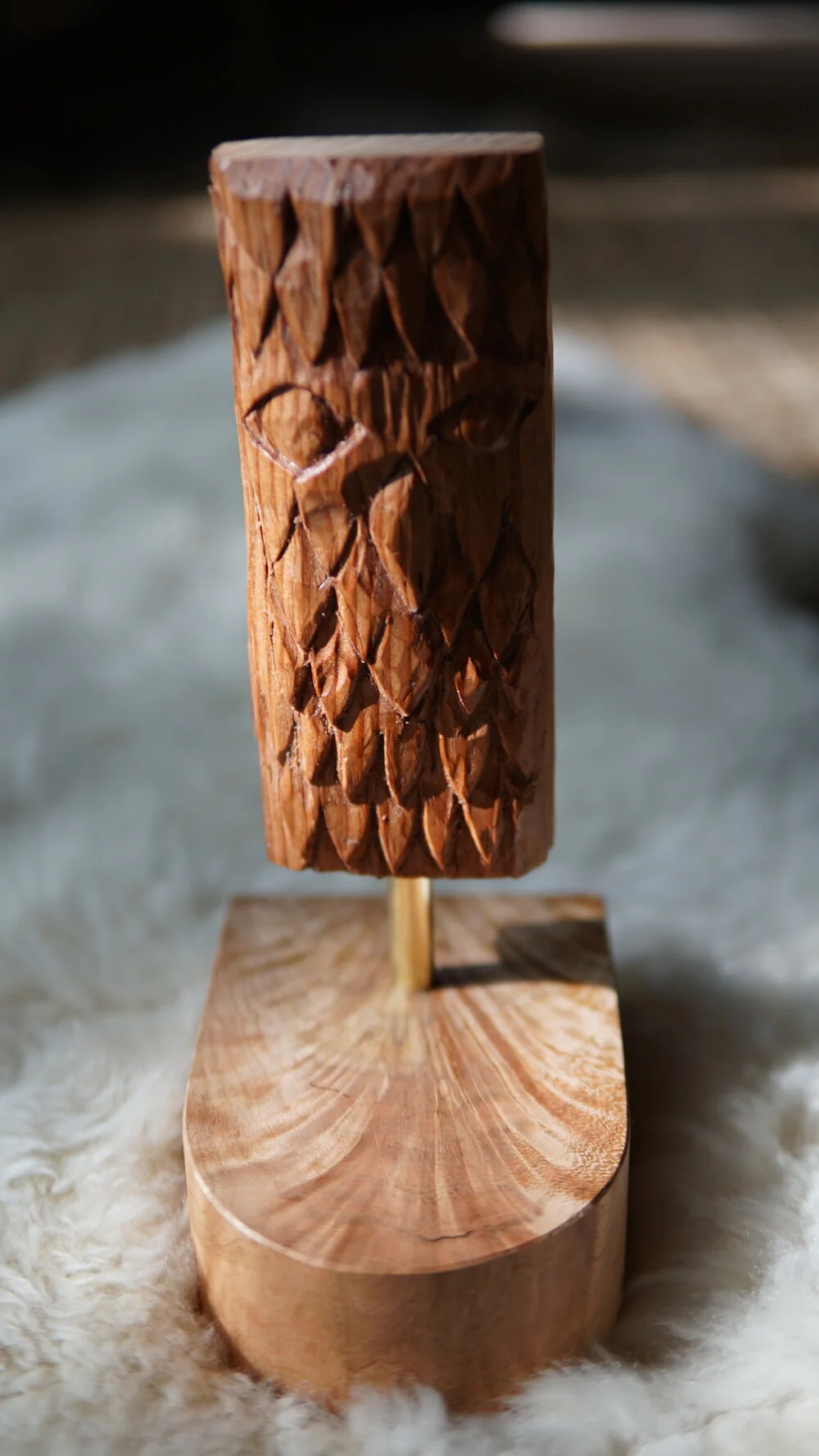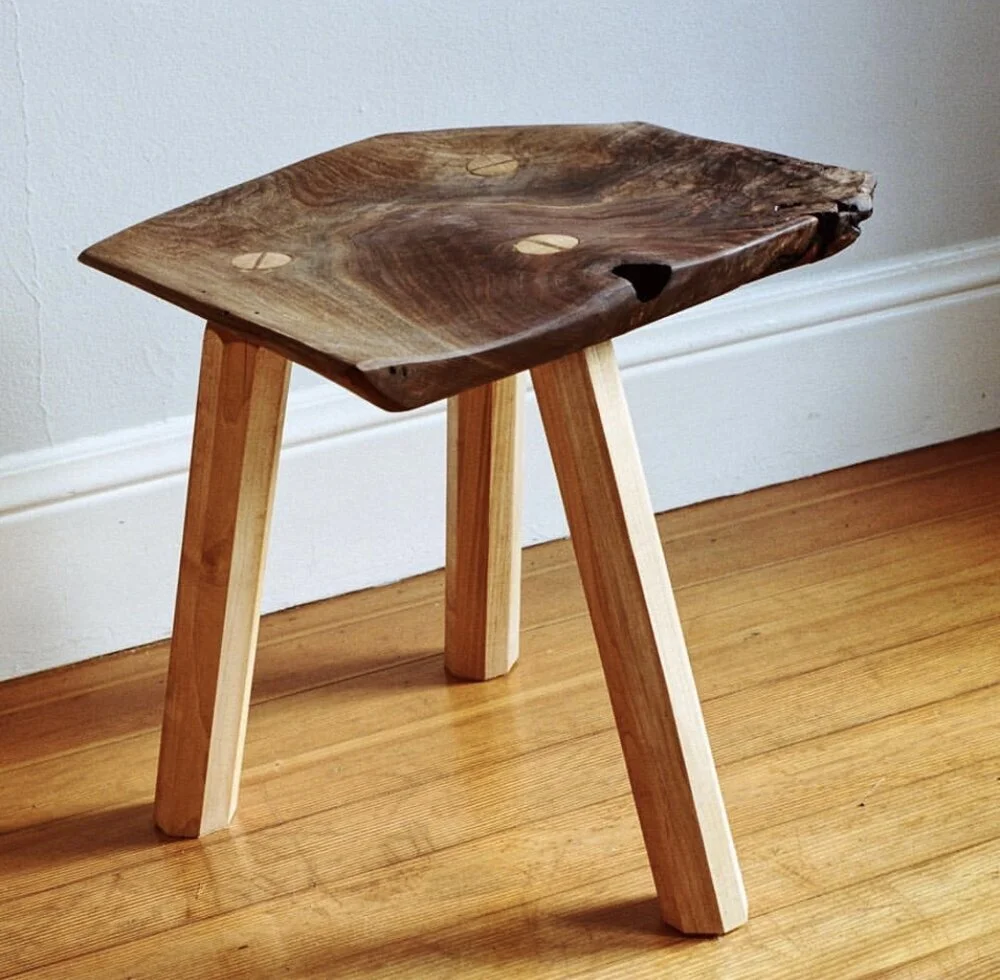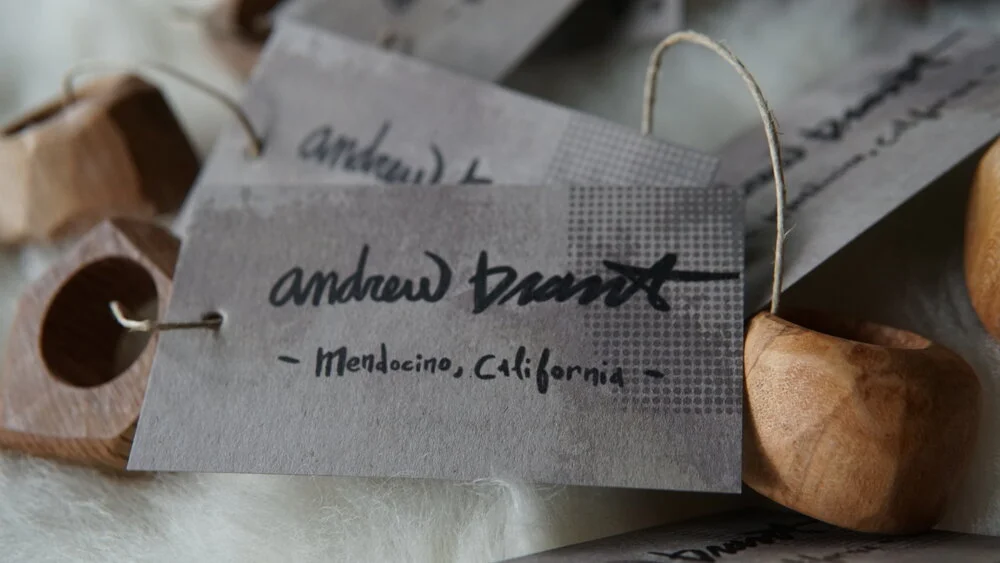Winter update, as we bundle up inside with cider
Andrew Brant Woodworking & Design Newsletter - November, 2020
So there’s quite a bit going on behind the scenes these days! I’m building a shop, Ashley is working on her books, we are sheltering in our very cozy place way out in the redwood forest. For an hour a day, if I’m not tired from riding my bike, I’m reconstructing the falling apart nursery on our land (unsafe level falling apart) and blazing a trail down to the creek behind us. After over a decade in Chicago and Nee York winters, I’m in heaven in a medium weight jacket outside all year ‘round. When it’s ready, hopefully with wood and stone steps down to make it nice and easy, it will be a beautiful sacred space, with not a single other person or man made anything bad far as the eye fan see. Just redwoods above, a creek below, and the steep earth between.
The biggest news, to me at least, is that I’m building a shop in our home. It’s a pandemic, we live in the woods where sound almost isn’t an issue, Ash has her studio here, so I’ve spent the last several months moving heavy equipment, putting up walls and flooring, and dialing in tools so that I can build more redwood tubs, build more tables and chairs, build more cabinets like at the Krenov school, and make more musical instruments. I’ll be able to make more sculptures and paintings too, and frames, with a shop of my own. So, I’m very excited. I’ve spoken to everyone in my commission list about the delay while I set up, but, know that it’s because I’m investing seriously in my future so thank you for investing in me.
Fine Woodworking Magazine
A couple months ago the kind people at Fine Woodworking Magazine reached out a bit ago to run a photograph of my workbench! It’s just a small photo and a blurb, but it means a lot to me. If you don’t know Fine Woodworking Magazine, they’ve been around since the late 1970’s and really rode the wave of really heavy interest in woodworking through the 80’s and early 90’s. James Krenov wrote for them often, George Nakashima, and since then has become the standard for American magazines dedicated to teaching the craft of woodworking. So it’s a big honor to be included.
I built this bench last spring, in the first few months of the pandemic, cautiously going to The Barn, the shared workshop in downtown Fort Bragg I was using super early or late to use it when people weren’t around. Since I started woodworking in Sunnyvale on my deck, I’ve made probably four or five tables that you could consider workbenches - and it’s shocking to think how crude the first one was, how well intentioned by perfectly terrible thing I had made. There were misssteps too, like the one with metal legs and flat sawn Ash that looked great in my Brooklyn apartment but would skid around the hardwood floor like it was on hockey skates. The second to last one solved this by being three hundred pounds heavier but design mistakes and time meant I never finished it the way it was intended, and later I gave away the completed top. Classes at Lost Art Press, meanwhile, only furthered my love of the form - and one of the perks of taking classes in the home of the author of “The Anarchist’s Workbench” and what, six more books on workbenches is that you can try out any one of like ten different styles of benches he has in his shop. The Krenov School uses classic European benches, great things bought from companies in Sweden for several thousand dollars each, and all of them are now forty years old having endured beating 6 days a week from students. So I knew, around the making of the second to last bench, what a good one could be.
I couldn’t leave Fort Bragg because of the shelter-in-place rules, and I didn’t want to order any wood, knowing that I would need more. So I used locally abundant Douglas Fir. While most people think of making a workbench out of the hardest wood possible, there’s another train of thought - the bench itself shouldn’t be hard, it should be softer than the woods you’re working on so that it dents, not the work. The second is that the hardness doesn’t matter when you consider the entire structure - the stiffness does. And Douglas fir is very stiff, with a tiny bit of flexibility. Consider the trees in nature - Douglas Fir’s can be mistaken for redwoods out here. Tall, skinny, single main branches that can survive in the wind and be stiff enough to reach for the light at the top of the forest canopy. And around here, apart from Redwood (a fairly terrible workbench wood, i found out on my first bench, more like making it out of styrofoam) it’s the one wood I can get in huge volumes of big, straight, knot free sections, and I could load it up into the bed of my pickup truck just in the drive through barn of the lumberyard and be safe.
For the vise I built, integrated into one of the legs, I had a different consideration -here I did need a wood that would be very hard. It’s a vise, it’s going to be squeezing things inside it, so I don’t want it to dent and deform from the crushing i’m going to put it through. I had bought some Southern Live Oak from a friend who got it from a friend who got it from a tree that grew in Urban Los Angeles. It’s beautiful, hard, the opposite. It’s extremely rare. It’s not just one tree, it’s so figured that even pieces that came from different parts of the tree don’t look like siblings.
Anyway, I love my bench, and even though it was made in a pretty dark and confusing time it’s a symbol to me that even in those times we can make things, we can build things, we can grow and thrive.
I’m making a new line of bandana slides! It’s a little thing, but I’m finding a lot of beauty in them. I wear a banana everyday, and I was before the pandemic and conveniently already had a collection of them, but knotting them and unknotting them can be hard on really nice, raw cotton or silk bandanas or even just the perfect old ones. So I remembered something from my childhood and here we are, bandana slides.
I’m really finishing each one of these like a jewel. I’m mixing the organic finish by hand, the wood is extra carefully selected for the perfect grain, no two are the same, so each are really a little piece of art. I’m letting the grain tell me what kind of facets these need to have. Doesn’t replace a mask, but might as well have some style with the backup.
Another thing i was inspired to make recently are animal totems. Growing up in an evangelical church, having any kind of object to pray to was very clearly not allowed. Our churches were painted white, with minimal adornment, plain crosses (not crucifixes, the body) and since theologically everything that happened at the altar was strictly symbolic, the altar itself was just a pretty table - I remember I didn’t even know it ‘was the altar’ until well into my teens. It was usually off to the side and rarely used in services.
As a teenager I would slip off to the only Buddhist temple I knew in town, a Tibetan place in what we rural kids called ‘downtown’ but was really an urban, residential Hispanic neighborhood on the border of a light industrial area. We definitely had altars there, and stories every week of different Tibetan demigods or spirits. Around the same time I visited the home of one of my teachers, who (it so happened, she never talked about it) was a highly devout Russian orthodox convert, and a talented artist when it came to all the eggs, paintings, food - everything. She had a home filled with icons, as she would say, and beautiful art celebrating the spirit that moves around all of us in her home. Like the Tibetan meditation center, I was too baffled in the moment to really comment, but I was moved. They seemed to be not exploding, so what was all the huff about not having totems, altars, icons, about?
For me it’s a way to focus my meditative energies. Making an avatar can be as simple as a shoebox with a thrift store scarf thrown over it to to look nice. Candles, nice rocks, flowers, a small bowl for offerings, incense - easy. Anything that means something to you, the process you’re working through, and what you want to call in as your intention for meditation.
Having moved out to nature, the first, a rural area, a lot of my medicine lately has been coming through the animal visitors I’ve been having. The dragonfly in my garage. The deer I see on my bike ride. The seal I see down on the harbor, when I’m taking a break and etching a fish sandwich after a long bike ride, playing in the water. The foxes I hear at night, with sounds like a screaming woman. The opossum I found in our compost. The stellar jays and finches out the window. The quail in our yard.
The redwood ofuros I make need to be out of very prescious Redwood, which only grows in a small area, and only trees that have naturally fallen can be used, or wood reclaimed out of old water towers or buildings if it isn’t too full of nail holes. Naturally, I have bits leftover once I chop everything to size, and I save it, quite jealously. What are these relatively small pieces asking to be? To me, altar totems. I start carving without an intention for what it is going to be - I let the grain and my intuition make the first decisions, and only later ask what is trying to emerge. So far, a fox and an owl have. I’ll let teachers of that kind of medicine do their thing for explaining what those could symbolize or mean, but if these sing to you let me know. Or if you have any requests for other animals important to your life.
The bandana slides are also a nice small item to run through my new shop, and then, up onto my new web store. More behind the scenes news- I think it’s a curse having worked in so many shipping departments, and literally on the design of commercial shipping software. But I’ve re-worked the back end of my website store, you’ll now checkout through Shopify. These bandana slides are the first thing in offering on there- in the future I’ll put things that are finished, ready to sell and things that are made-to-order. If you’re interested in a wholesale order, please reach out.
The bandana slides are also a nice small item to run through my new shop, and then, up onto my new web store. More behind the scenes news- I think it’s a curse having worked in so many shipping departments, and literally on the design of commercial shipping software. But I’ve re-worked the back end of my website store, you’ll now checkout through Shopify. These bandana slides are the first thing in offering on there- in the future I’ll put things that are finished, ready to sell and things that are made-to-order. If you’re interested in a wholesale order, please reach out.
I’m deep into lots of custom work! It’s awesome, and I’m so grateful. I’m making a couple beautiful dining table out of slabs of cherry and slabs of spalted maple, with marching benches and brass details. I’m making a standing desk, a Japanese tea table, bath benches for along the tubs, so much more- and that’s after spending the last two months basically putting together and arranging tools and my space.
Almost every thing I make is custom- the bandana slides are an experiment in something that’s not. So the way to get something is just to ask me. Email, Instagram DM, carrier pigeon. Maybe you have a screenshot of one of my old pieces or something else in the world that lights you up. I’be been asked to make game boards, musical instruments, awards, all kinds of things! It’s really fun going through the process together, especially if you tell me what it is about my work that brought you to me. Nice and simple.
We will chat a bit, if it’s not something I’ve made before then there’s often a bit of “this is what I do, and here’s what I don’t do, but if you’re really interested in that I know people who could do it for you”. There’s a whole universe of people in their garages and basements, making crazy cool things. I personally get a thrill talking to people about fixing a vintage stereo, wiring up a custom lamp, or things like that. Working with people in furniture, and talking about what people want or need, has helped me articulate the same in my life. And there’s just a wonderful, wonderful community of people out there. I’m the best at being me. That’s about it, and I’m always grateful and thrilled when people ask me to make things, or make something I’ve made before.
This has already gotten longer than I thought it would! But from the bottom of my heart, I want to say thank you for following along, for all your support, and wish you well in the coming fall.
Take care,
Andrew Brant

